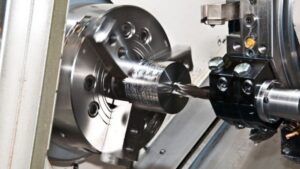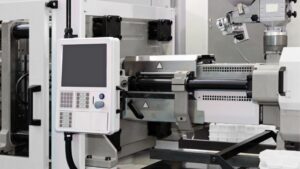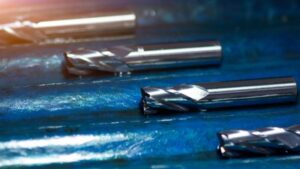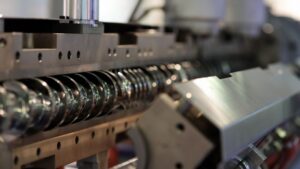Many startups involved in the manufacturing of hard products build their business models around injection-molded plastic parts. However, many of these companies often find it challenging to secure funding to pay for the plastic parts they need. This is usually because of a lack of knowledge regarding sources of funding for companies in this field.
This article focuses on different avenues you can follow to get funding for your injection-mold-driven startup. We start by defining injection molds and why a company can benefit from using them. The article then looks at some of the reasons your injection-mold-driven startup may need funding and the factors influencing the initial costs. Lastly, we explore different funding sources.
If you get the funding, it will be vital that you spend it prudently. This is why we have decided to include some tips on how you can reduce your injection-mold-driven startup costs.
What Are Injection Molds?
Look at any product near you right now, and you will realize that all manufactured hard products have a specific shape or are made up of parts of different shapes. The shape of many products we use is determined by the type of mold used to produce it.
The mold-driven production of specific metal and non-metal products in different shapes requires different sophisticated tools attached to a press. This tool shapes products using pressure. The tool that determines the shape of the finished part is called a mold.
Molds can be categorized into two main classes: plastic and non-plastic. For instance, to produce a car bonnet or other metal body parts, you would use a non-plastic mold. On the other hand, you would use a plastic mold to create the shell of a printer.
Injection molding is the process of manufacturing plastic parts using molds. The plastic or synthetic material is heated to a melting point before the liquid material is transferred into the mold. As the material cools down and hardens, the required shape is formed.
Injection molding is suitable for firms that want to manufacture a large number of identical parts. Even though the process is commonly used when producing plastic products, it can also work with other materials like rubber, glass, and metal.
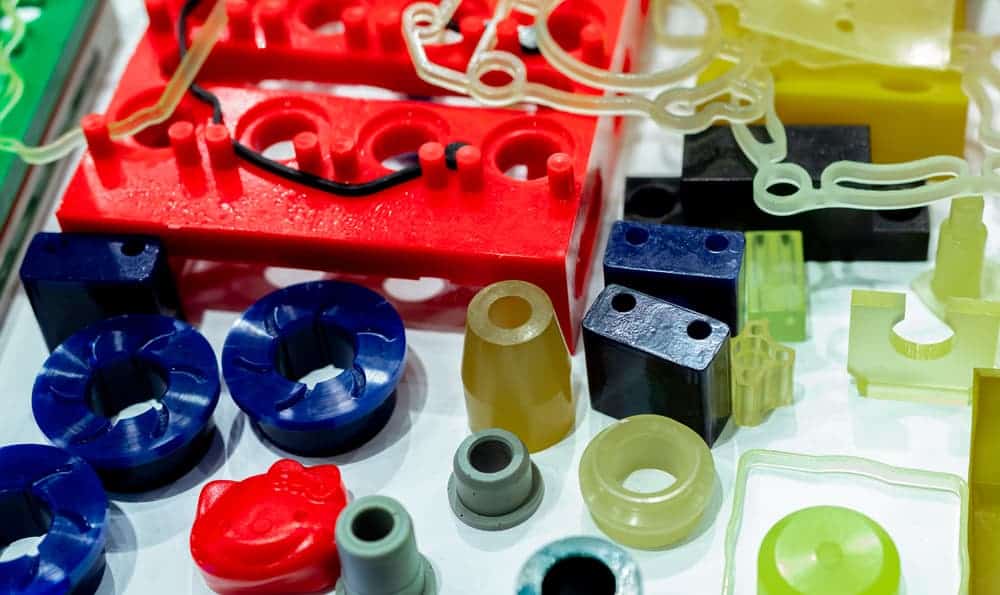
Why A Manufacturing Startup May Need Injection Molds
Injection molds present several advantages for a manufacturing startup:
Unlimited possibilities: Injection molding presents manufacturing companies with endless possibilities for creating products with intricate shapes. Once you have the mold, the manufacturing process involves transferring liquids into it and forming the parts you need.
Time-saving: Attempting to manufacture thousands, if not millions of products using CNC machining or manual techniques is time-consuming. On the other hand, injection molding speeds up the process because the shape is created only once, and all the subsequent parts take the shape of the mold.
Why An Injection-Mold-Driven Startup May Need Funding
The idea of a startup denotes a new business whose creator believes it is scalable. Often, these businesses grow beyond those who started them. However, startups are known for their high failure rates, indicating that such businesses face high levels of uncertainty.
If you are planning on starting an injection-mold-driven business, you can expect some challenges. If there were no challenges, everyone would be able to start one.
Budget demands: Most of the challenges that mold-driven startups face are related to funding, as costs can increase quickly when launching a new product.
Meeting supplier demands: As an injection mold startup, you’ll often realize that businesses involved in creating injection molds will only accept your order if you can meet their production minimum. This implies that the manufacturer will not accept your order if you don’t have the funds to commit to that minimum.
Information: When you start a new business, you’ll often face information gaps. Details that may be common in the industry may not be so common for you. Those who hold the information you need will often require payment to release it. You may need to hire consultants who know the intricacies of the industry to assist you.

Factors Influencing The Cost Of An Injection-Mold-Driven Startup
Before you go looking for funds for your injection-mold-driven startup, you want to have an idea of the costs you should budget for. Here are some typical costs you will need to consider:
- Molding Tools
- Materials
- Development of prototypes, design, and engineering
- Real estate
- Human Resources and training
- Software
- Compliance, health, and safety
- Marketing
- Distribution and warehousing
Accessing Funding
By now, it’s clear that starting an injection-mold-driven business can be very costly. However, this does not mean that it’s impossible for those who are determined. Below, we look at some of the primary sources of funding that injection-mold-driven startups can turn to.
Crowdfunding
As the name suggests, crowdfunding involves getting money from a “crowd” instead of one or two prominent investors. Crowdfunding can be categorized into four main groups: debt, donation, equity, and rewards.
Let’s look at each of these four categories in detail:
Debt: This type of crowdfunding involves peer-to-peer lending, where you’re expected to pay the funds back to the people who advanced them. Commonly, the people that provide the money are looking for a return on their investment, usually paid as the initial amount with interest.
Donation: People who make donations to a startup do so because they believe in the idea. When they give their money, they do not need anything in return.
Equity: Participants in this type of crowdfunding will provide money to your injection-mold-driven startup with the aim of getting a particular share of your business. These participants will also expect to get a portion of the business profit based on their equity in the business.
Rewards: In this type of funding, donors make their funds available in anticipation of a reward. This could be something as simple as a meal voucher or a discounted service. Usually, the more you contribute, the bigger the reward.
But where do you find the crowd to invest in your injection-mold-driven startup? Luckily, there are many websites dedicated to bringing together people looking for startups to invest in. Examples include Kickstarter, Indiegogo, GoFundMe, and Fundable.
Venture Capitalists Or Investors
When venture capitalists or investors see a business with growth potential, they put their money into it. Businesses funded by venture capitalists tend to be high risk. However, these investors believe that fortune favors the brave and know that if the idea scales, their investment could double several times.
For startups, the main advantage of venture capital is that the funders also risk losing their money if the startup doesn’t succeed. Therefore, you don’t have to worry that you’ll owe the investors if you fail. On the flip side, you also need to understand that you cannot take all the profit for yourself if the business succeeds.
Because venture capitalists or investors want to safeguard their investment, they are always willing to offer the many years of institutional and business knowledge they hold. You could also take advantage of their business connections.
Business Loans From Banks
Business loans are some of the oldest methods of funding startup businesses. When we talk about business loans, one institution that comes to mind is the bank.
While banks will not usually come with the benefits you can expect from angel investors or venture capitalists; they have some advantages. One of the main advantages of getting a bank loan is that you don’t have to cede control of your business to third parties in exchange for funding.
Getting a business loan is one of the most challenging ways of getting financing for your injection-mold-driven startup. The bank doesn’t like to lose money and will put stringent measures to ensure that you can prove your ability to pay back the loan. Therefore, you will need to ensure that you have a proven business model before applying.
Small Business Administration Loans
A startup business loan is a credit facility specifically designed to help new businesses cover their initial costs, such as hiring new staff, finding premises, working capital, and buying equipment and supplies.
In the United States, the Small Business Administration (SBA) loans have helped many startups get funding for their operations. These loans are designed for companies that find it challenging to find startup financing in the nongovernmental sector.
SBA loans are only available for:
- Profit businesses that are officially registered and operating legally.
- Businesses registered and operating in the US or its territories.
- Firms with invested equity, where the business owner has devoted their money and time.
- Businesses that can show proof that they have exhausted financing options from other lenders.
The SBA comes with several advantages, like high funding amounts, low-interest rates, and long payback periods. However, to access these types of loans, you’re required to have between 20 and 30% of the total amount you need, and your business should be in operation for more than six months.

Equipment Leasing
If you didn’t have enough money or don’t want to buy a house, you still have the option of renting someone else’s and getting the benefits of having a home. You could do the same with equipment for your injection-mold-driven startup by leasing the equipment instead of buying it.
Usually, the equipment you lease will be owned by a bank or a finance company. The lessor works out what you will pay to use the equipment for a certain period. However, the equipment will still belong to the company that you are leasing it from.
Even though the equipment lease will ensure that you use the rest of your funds on other startup needs, it is vital to make sure that it earns you enough money to cover the lease charge and produce a profit for the business. Thus, it is crucial to negotiate a win-win arrangement with the lessor.
Community Programs For Entrepreneurs
For startups in communities marginalized from the mainstream economy, community-based entrepreneurship becomes a practical way of funding businesses. Getting funding from sources within your community comes with the advantage of shared values, linkages, and resources. In such an environment, trust is easier to gain.
The idea of community includes members of your family, friends, and associates. While a family member or friend may not have the funds to help you start your injection-mold-driven business, they may know someone who does.
Personal Finances
Personal finances are crucial when you want to start a business. Most startups are established using self-financing.
Most funders, including government initiatives, angel investors, venture capitalists, and bankers, will usually expect you to prove that you’re also willing to invest your own money in the startup you want them to fund. No one wants to risk their money in a business whose owner is not willing to risk in.
Reducing Injection-Mold-Driven Startup Expenses
Once you’ve got the financing all sorted out, your next task is to ensure that you use the money with care.
The website 3DHubs.com provides some tips on how you can reduce the cost of production in your injection-mold-driven startup:
- Use the straight-pull mold because other in-mold mechanisms can add between 15 and 30% to costs.
- Avoid features with undercuts by redesigning the injection mold. This will increase production speed and lower the cost of manufacturing each part.
- Fit multiple parts in the same mold, which could reduce production time by four-fifths.
- Stay away from small, unimportant details like text which could increase the time taken to create a mold.
- Avoid high-grade finishes if the part you are making is not for aesthetic use because such finishes can add to costs.
- Lessen the part’s volume by reducing the thickness of its wall if this doesn’t lead to a substandard part.
- Use secondary operations for parts of your production when dealing with lower-volume productions, such as drilling holes after molding rather than using the mold for such tasks.
Besides the cost savings specific to an injection-mold-driven startup, you also want to follow general tips on saving, such as using free software, sharing premises, requesting discounts, creating a formal budget, and employing freelance staff for admin and marketing tasks.


